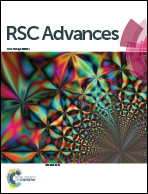Highly-twisted, continuous nanofibre yarns prepared by a hybrid needle-needleless electrospinning technique
Abstract
Nanofibres prepared by electrospinning have shown enormous potential for various applications. They are obtained predominantly in the form of nonwoven fibre webs. The 2-dimensional nonwoven feature and fragility have considerably confined their further processing into fabrics through knitting or weaving. Nanofibre yarns, which are nanofibre bundles with continuous length and a twist feature, show improved tensile strength, offering opportunities for making 3-dimensional fibrous materials with precisely controlled fibrous architecture, porous features and fabric dimensions. Despite a few techniques having been developed for electrospinning nanofibre yarns, they are chiefly based on the needle electrospinning technique, which often has low nanofibre productivity. In this study, we for the first time report a nanofibre yarn electrospinning technique which combines both needle and needleless electrospinning. A rotating intermediate ring collector was employed to directly collect freshly-electrospun nanofibres into a fibrous cone, which was further drawn and twisted into a nanofibre yarn. This novel system was able to produce high tenacity yarn (tensile strength 128.9 MPa and max strain 222.1%) at a production rate of 240 m h−1, with a twist level up to 4700 twists per metre. The effects of various parameters, e.g. position of the electrospinning units, operating conditions and polymer concentration, on nanofibre and yarn production were examined.


 Please wait while we load your content...
Please wait while we load your content...